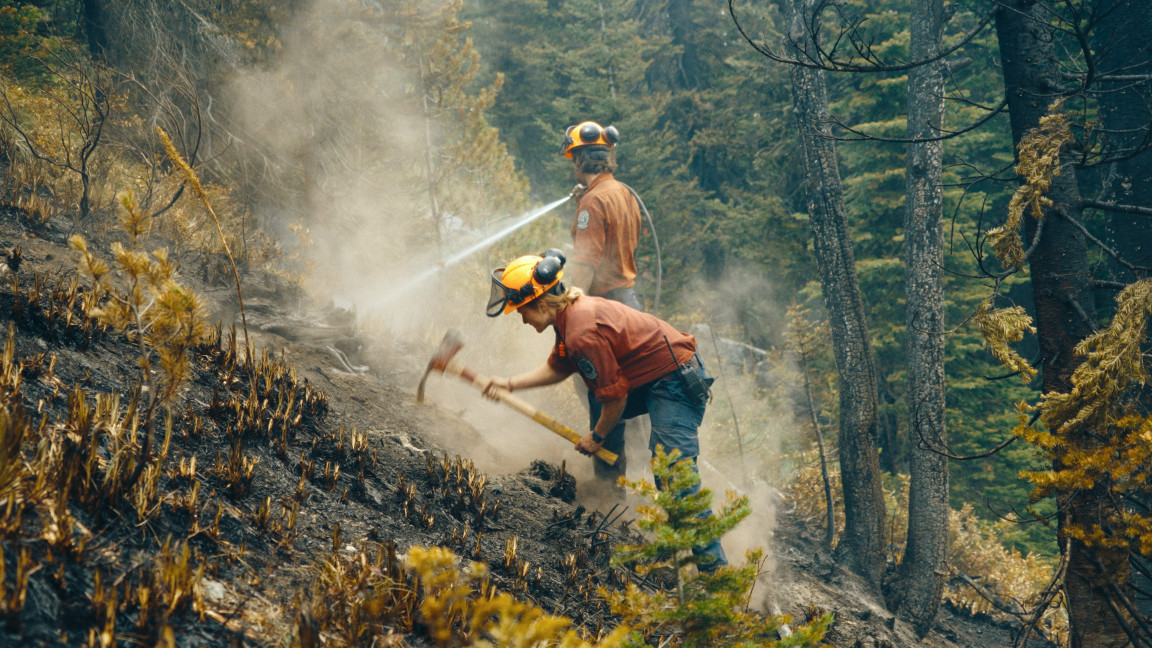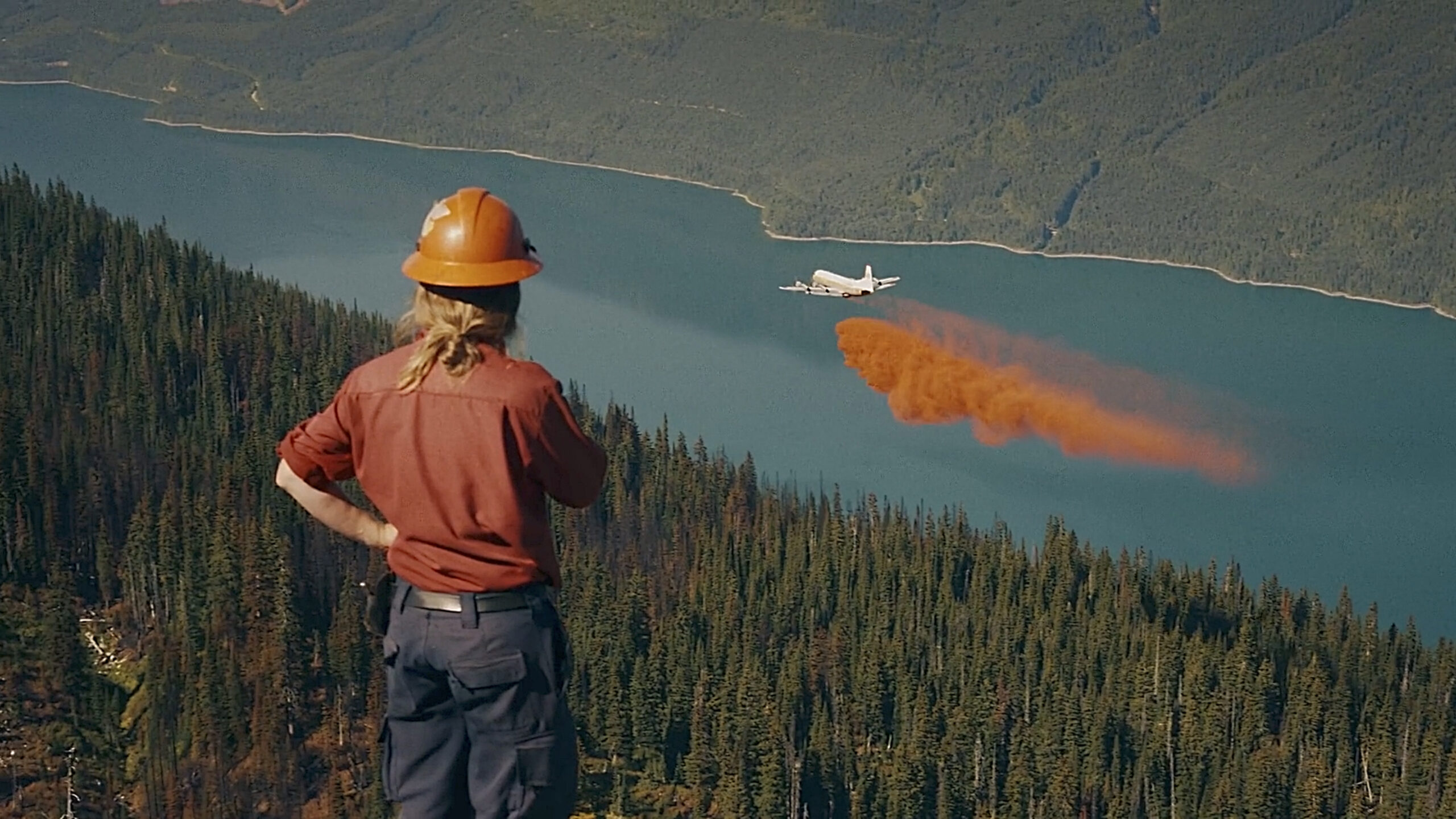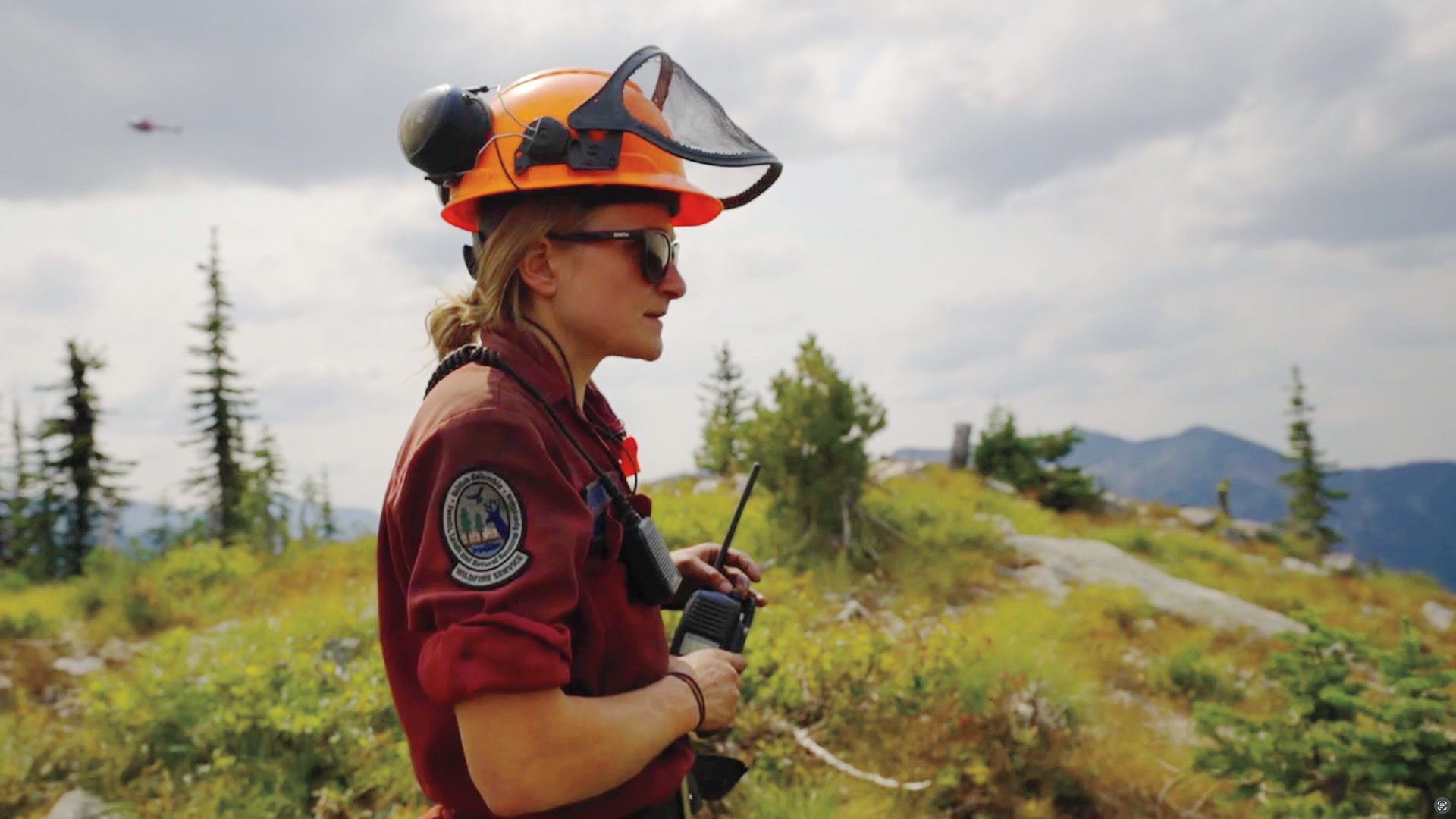In late June 2021, a deadly heat dome swept through Western Canada and the Northwestern United States, killing thousands of people and animals, collapsing infrastructure, and shattering temperature records across the region. British Columbia saw more than 600 heat-related deaths, and several fires sparked across the province. One of those fires, which ignited just outside the village of Lytton, in B.C.’s Interior, was so powerful that it quickly burned 90 per cent of the town to the ground. The temperature that morning was 49.6C, the highest ever recorded in the country.
The heat dome—which scientists concluded would have been 150 times less likely without human-induced climate change—was both the apotheosis of B.C.’s worsening climate reality and a harbinger of worse heat and fire seasons yet to come. That year, 1,610 fires sparked across the province, burning nearly one million hectares. As climate change brings drier, hotter weather and more dry brush for fuel, B.C.’s reality is now one of fires that burn larger, longer, and deadlier than ever before.
“It’s something that is relevant for all of us. Just because you live in a city doesn’t mean you’re removed from this,” says Kevin Eastwood, the Vancouver–based executive producer and showrunner of Knowledge Network’s new documentary series Wildfire.
The five-part series takes viewers to the front lines of the crisis, exposing the on-the-ground reality of B.C.’s wildfire fighters—the crews and individuals who are the first line of defence in our new paradigm. Sleeping in tents on mountainsides, they wake up in the early hours of the morning to track fires and mark trees that may cause danger. They are the people flown in by helicopter to drop fire retardant and water on active fires, and they often risk their own lives to protect the communities they live in.

In the fall of 2021, after the devastation of the Lytton fire, Eastwood was approached by two filmmakers and former BC Wildfire Service firefighters, Clayton Mitchell and Simon Shave, who were part of his camera crew on a different project. “We were filming in the Kootenays, and on the last day of filming they approached me and said, ‘We have an idea for a documentary series. We want to do a show about wildfire fighting.’”
Eastwood was immediately intrigued. Having worked on other local public-interest projects like a series on Vancouver General Hospital’s emergency room workers, Emergency Room: Life and Death at VGH and British Columbia: An Untold History, about the many racialized communities that have shaped the province, Eastwood felt well-positioned for the role. “I want to draw attention to the people who do this work, because they very much are first responders, as much as the traditional jobs that we associate with that: the fire, police, and ambulance. In 2025, first responders in B.C. also include the people that are going and dealing with these fires.”
In the first episode of the series, viewers meet Chloe, a young West Kootenays resident who heads an initial attack ground crew charged with controlling a small fire outside Nelson. As we see her phone her crew members and inform her partner that she’s leaving to fight a fire before jumping on her motorbike, the intensity and stakes of the situation feel palpable. Her task could be a matter of life or death—her own or others’. The episode shows us why. Eastwood takes us to Lytton, where former residents share video footage and personal testimony from the worst day of their lives, as they watched the fire’s ferocious flames engulf their homes, belongings, vehicles, grocery store, public library, and beloved pets in a matter of minutes. It’s a sobering portrait. “Lytton was always on my mind,” says Eastwood. “Lytton is featured prominently as the backdrop of what everything else is against. It hopefully shows the stakes that are present. That you can’t take any chances.”

Wildfire gets us closer to B.C.’s fires than perhaps any other documentary has. Access was a defining feature of the production, presenting both a challenge and an opportunity. When Mitchell and Shave first approached Eastwood about the project, he was skeptical that it would be greenlit, given the legal and logistical hurdles and BC Wildfire Service’s reticence to work with other filmmakers who had previously tried.
But because Shave and Mitchell each had over a decade of experience as firefighters, and because the series would be produced by a public broadcaster for a B.C. audience, the Wildfire Service eventually consented. Then began the process of training the firefighters being filmed to shoot footage themselves.
“I was never on the fire line, because I’m not qualified,” Eastwood says. “That was a promise we made to BC Wildfire, that nobody would ever be in the field, embedded with a crew up on the fire line, that was not trained by BC Wildfire.” The limitation meant that Eastwood led a “mini bootcamp where we tried to teach wildfire fighters to be documentary filmmakers.” The result was a lot of tape to sort through in postproduction, but also some unparalleled footage. You can hear the crackle of bone-dry underbrush as ground crews trample it with their heavy boots, and nearly smell the smoke that surrounds them.
After a year of development in 2022, production went into full swing in 2023, which would end up being the worst fire season on record in B.C. Safety was always front of mind during shooting. “Safety is kind of the utmost concern for everyone that’s on the fire line—the firefighters and ourselves,” Eastwood said, adding, “Fortunately, none of our crew were ever in anything too dangerous.” Episode 3 of the series highlights the substantial risks firefighters face as they sacrifice their safety to protect others. “It deals with some of the fatalities that happened both [in 2023] and historically, so you see the real danger.”

The goal of the series was not just to highlight these front-line workers but also to provide education on the wildfire-fighting process and the realities of the climate crisis. “Hopefully it makes everybody think about climate change in an accessible way,” Eastwood says. “At one point we were going to have a lot of experts [talking about] everything that’s happening at a higher level. But we realized it didn’t mesh with everything else we were doing.” His story editor also reminded him that people who are skeptical about climate change and haven’t listened to scientists and experts so far will likely be disinclined to do so at this stage. “So I thought, you know what? Let’s leave it to be expressed through the people on the ground doing this work. That’s who we have as our messengers in the show. Hopefully they might change hearts and minds.”
Read more stories about the effects of climate change.









